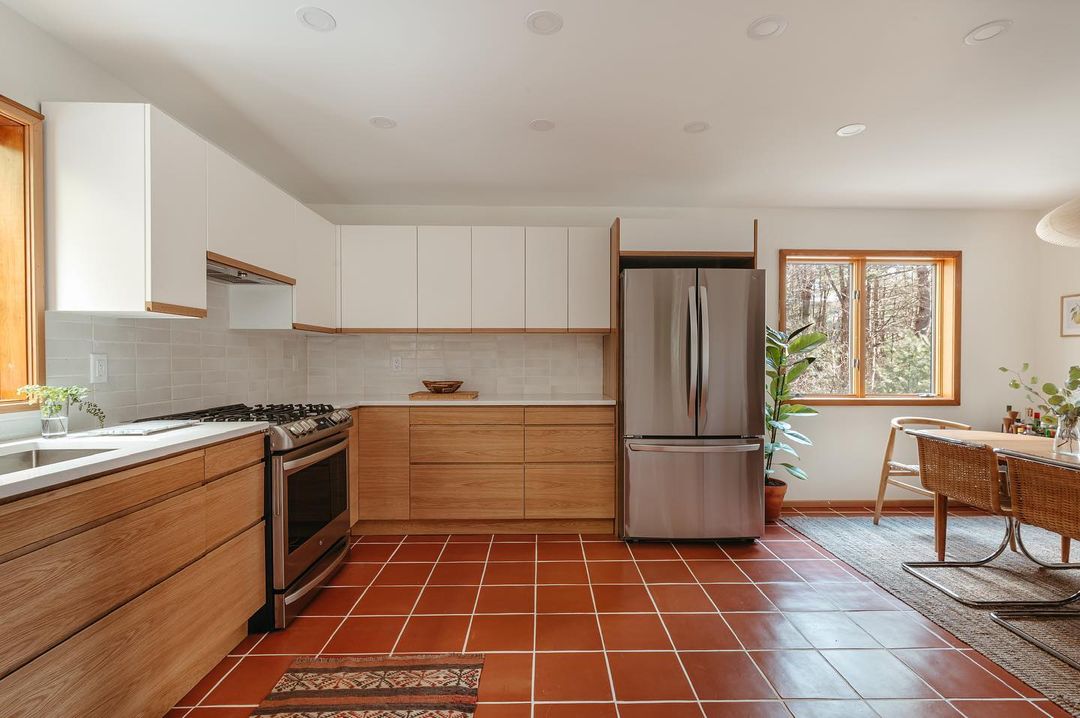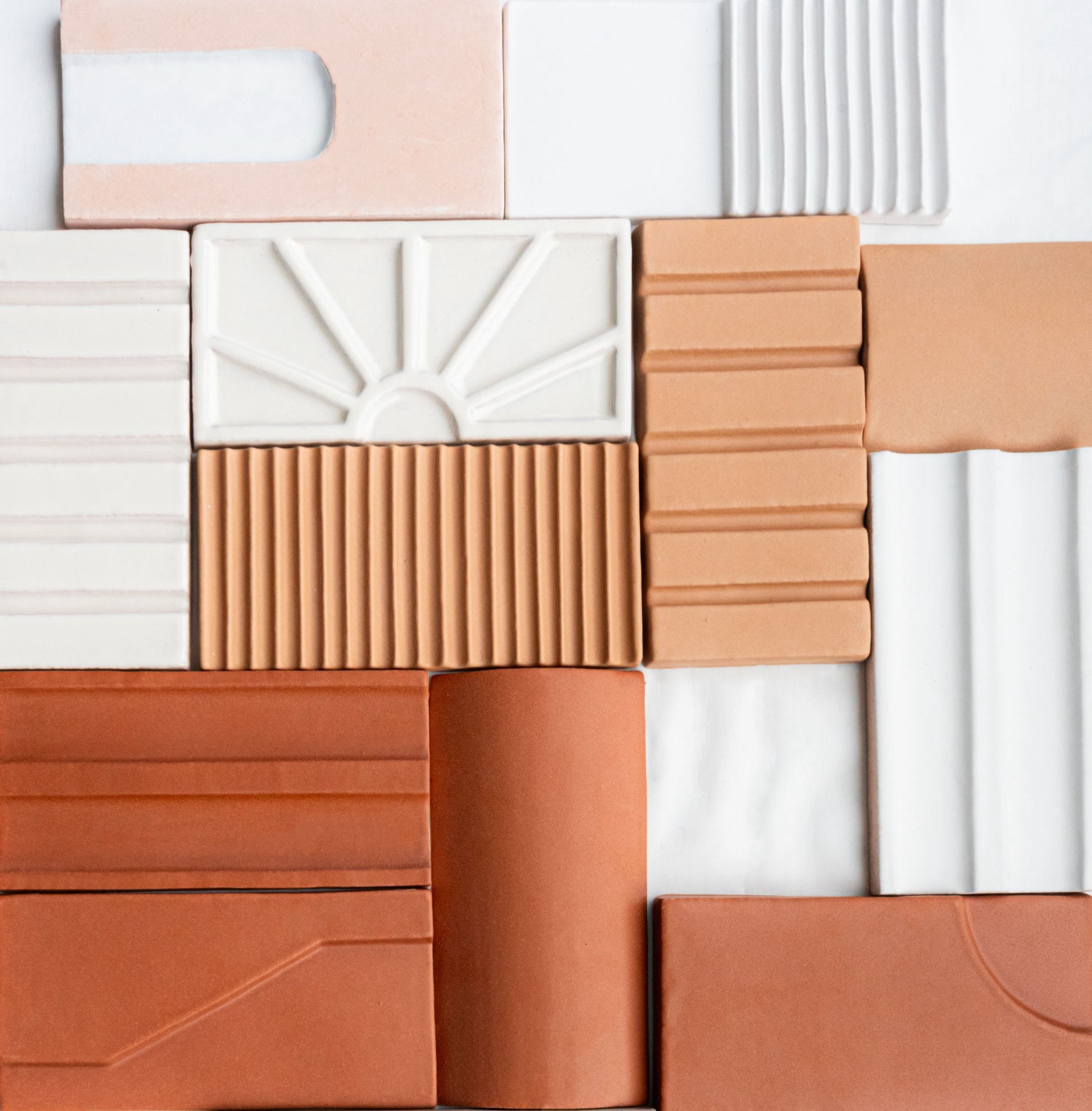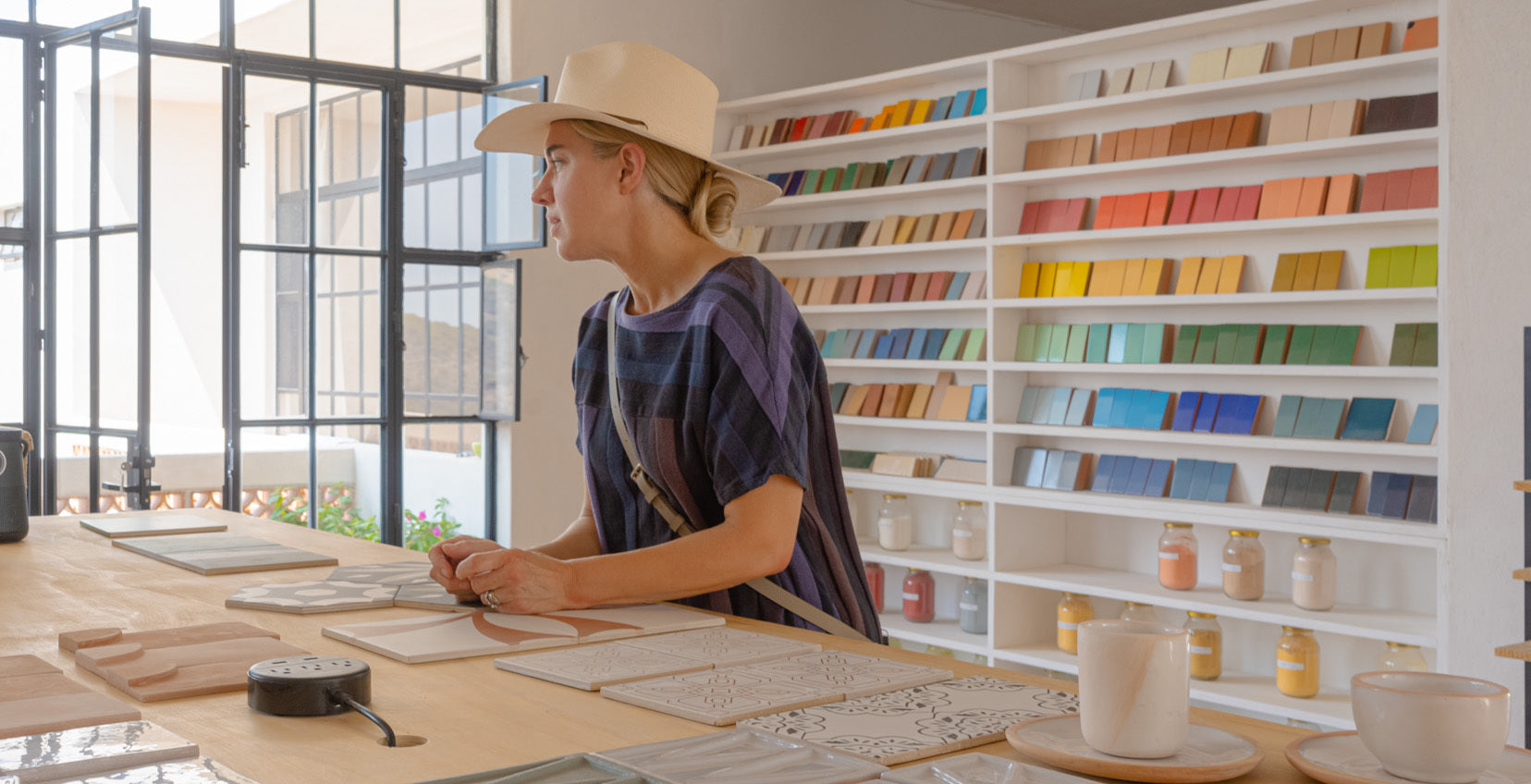Learning how to find the best layout for your project
By Clay Imports
So you have your tiles ready, your installation space is clean and ready to be worked with and you have your grout ready to finish the job. But now, how do you lay out your tiles? In this article we’ll take a look at the most popular layouts for rectangular, subway tiles and how designers used them to achieve a modern design, a classic feel or how they took them to a completely new level.
- What’s a subway tile?
- Why does a tile layout matter?
- Subway tile layouts
- Offset
- Vertical Offset
- Horizontal stack
- Vertical Stack
- Basket Weave
- Single Herringbone + Offset
- Herringbone
- Double Herringbone
- Mega Grout Lines
- Conclusion

What’s a subway tile?
Subway tiles earned their name due to their historical association with subway stations. These tiles were first introduced as a practical and durable wall covering for the newly emerging subway systems, particularly in New York City. The original tiles were introduced as a 3” x 6” tile, but now, most rectangular wall tiles are considered Subway tiles regardless of their size.
Their iconic design is characterized by a smooth, glossy finish, allowing for easy cleaning and maintenance. The clean aesthetic of subway tiles quickly gained popularity beyond subway stations and found its way into residential and commercial interiors around the world. Today, subway tiles continue to be a beloved choice for their classic appeal and versatility in various applications, reflecting their enduring and practical use.
At Clay Imports, our subway tiles are 100% handmade. Handmade tiles exhibit natural variations, which are inherent traits of natural products. These variations are not defects but rather a natural part of the product. We highly recommend ordering samples before making a final purchase to confirm and appreciate these natural variations in each tile.
Why does a tile layout matter?
Tile layout plays a crucial role in determining the overall aesthetic, appeal and functionality of a space and directly influences the visual impact and style of the tiled surface, whether it's a kitchen backsplash, a bathroom wall, or a subway station platform. The tile layout creates a sense of symmetry, balance, and harmony while enhancing the architectural design and elevating the space's overall ambiance.

Subway tile layouts

Offset
Using a traditional brick subway tile layout can be beautiful because it creates a classic and timeless look that can suit a variety of design styles. The rectangular shape of the tiles and the uniformity of the layout provide a clean and simple backdrop that can allow other design elements to shine. Additionally, the horizontal lines created by the layout can elongate a space and create a sense of continuity. The use of contrasting grout colors or tile finishes can add interest while still maintaining the overall simplicity of the layout. Overall, the traditional brick subway tile layout can be a versatile and elegant choice for many spaces.

Design by Edward Road Design | Photo by Perry Hall
Vertical Offset
The concept of vertical offset is a creative approach to the traditional brick subway layout, but with a unique twist of turning it on its side. By utilizing this technique, you can effectively draw the viewer's attention upwards, creating the illusion of higher ceilings and ultimately enhancing the overall appearance of the room. This innovative design choice not only adds visual interest but also maximizes the space, making it feel more expansive and open.
Horizontal stack
The very definition of a timeless, traditional layout. This layout is reminiscent of the original layout subway stations used when they were built and they bring a simple, yet elegant design element. Later adopted by the Mid-Century Modern design aesthetic, this classic look is now associated with more modern and streamlined tile designs. You can use it in showers and bathrooms, like in this renovation by Sarah Viebrock or even on floors and patios, as you can see in our “Everything you need to know about Mexican Saltillo tile” guide. Remember, you can offset the layout so you can achieve a ½ or ⅓ offset also known as a “running bond” or “brick layout”.
Vertical Stack
As the name implies, this layout stacks the tiles vertically on their shorter side. This layout is often used when you want to make a space look taller, giving a new dimension to your project. Vertical stack is also associated with modern design aesthetics due to its nicely aligned grout joints and “no fuss” layout. Both this and the horizontal layout are a perfect option if you are new in DIY projects, as our head of sales Anna demonstrates in her DIY kitchen backsplash.

Basket Weave
Basket weave patterns are built by stacking tiles into squares and rectangles. It can transform large spaces into a cozy, vintage look. This kind of pattern works amazing with vibrant, colored tiles or grout.
Single Herringbone + Offset
A mixed tile layout is a design technique that combines various tile layouts into a single layout. This approach creates extreme visual interest. By using a mix, you can create a dynamic and engaging layout that draws the viewer's attention. Mixed tile layouts can be used to highlight specific areas of the design or create a sense of hierarchy within the design. Ultimately, the success of a mixed tile layout depends on careful consideration of the content and a thoughtful approach to the design.

Herringbone
This kind of pattern is done when you layout your subway tiles into 45 angles, a perfect layout if you want your tile to be a focus point of your space. This elaborate layout is perfect to give a new texture to your tile installation, as you can see in Koko’s new bathroom. This pattern might be intimidating, but the final result will leave no one indifferent. You can check how this modern tile design works in this article.
 Design by Be Unica | Photo by Jane Ko
Design by Be Unica | Photo by Jane KoDouble Herringbone
Using a double herringbone tile layout can create a visually stunning pattern that adds interest and texture to any space. Additionally, this layout can draw the eye outward and creating a sense of movement. The angled design also adds stability to the tiles. This layout is versatile and can be used with a variety of tile sizes and colors, allowing for endless design possibilities.

Mega Grout Lines
To create visual interest, this type of "pattern" involves increasing the space between rows with grout. It is important to have a professional handle this type of layout as it can be more challenging!

Conclusion
Whether you're aiming for a classic herringbone elegance, a bold and modern offset pattern, or an intricate basket weave charm, take these layout inspirations as a launching pad and let your creativity flow.
And if you want to maintain your installation, we invite you to take a look at our Clay Care products. These maintenance items have been carefully tested with our products, and they are designed to preserve your tiles' beauty, ensuring their longevity and durability. From sealers to cleaners, purchasing these maintenance items together with your tiles not only simplifies your order but also prepares you to enjoy your tiles for a long time.
If you want to know more about these tiles, you can check our guide here. And remember, if you have any questions or require more information, don't hesitate to reach out to us at contact@clayimports.com.




 Design by
Design by  Design by
Design by  Share
Share
 Pin it
Pin it




